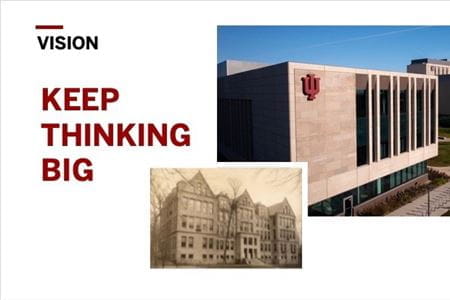They imagined “a medical school without walls” and “multiple pathways to achieving a medical education,” drawing upon the expertise of partnering universities, hospitals and teaching faculty in communities throughout all regions of the state.
“Today, in many ways, we have achieved all that was envisioned—and more. And we aim to keep ‘thinking big’ to continually improve and innovate in our mission areas of medical education, research and patient care,” said Dean Jay L. Hess, MD, PhD, MHSA, in his address to faculty, staff and students during the Spring 2022 All-School Meeting.
In case you missed it, here are highlights from the dean’s presentation:
EDUCATION
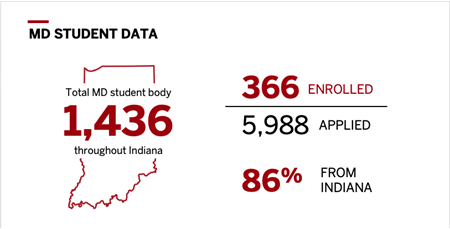
IU School of Medicine is the largest medical school in the nation. This year, the medical school enrolled 366 students out of an applicant pool of nearly 6,000. This means the school is selecting the best and brightest. The most recent matriculant GPA average was higher than the national average at 3.8, and IU School of Medicine students also score above the national average on the MCAT entrance exam.
Once students arrive at IU School of Medicine, they continue to excel, recording medical licensing exam scores above the national average.
IU School of Medicine students are increasingly satisfied with the quality of their medical education. An annual student survey shows continued improvement over the last five years as the Student Affairs team has worked hard to support students and partner with them to build the best educational program possible. IU School of Medicine’s four-year graduation rate is now also above the national average.
Student success is tied to having a robust curriculum. At IU School of Medicine, students receive the same high-quality educational program at all nine campuses—essentially a statewide campus with one curriculum.
Yet each of the regional campuses offers unique learning opportunities. Imagined just three years ago, Scholarly Concentrations offer students a longitudinal extracurricular program, designed to enhance their medical school experience without incurring additional time or tuition.
Now nearly 400 students participate in one of the 17 Scholarly Concentration programs offered throughout the state. In the Class of 2022, 73 students will graduate with a Scholarly Concentration designation.
None of this student success would be possible without the support of 3,783 adjunct faculty throughout the state. Thousands of physicians volunteer to help train IU medical students and prepare them for the next phase—residency.
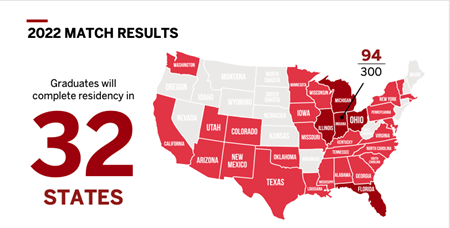
On Match Day—March 18, 2022—326 IU School of Medicine students matched with residency programs in Indiana and throughout the United States.
Top 5 specialties:
- Internal Medicine, Family Medicine, Pediatrics, General Surgery and Anesthesiology
- 41 percent of students will enter primary care residencies, helping to fill a significant need for primary care physicians in Indiana and across the country
- Nearly 30 percent matched into Top 25 ranked residency programs throughout the nation
- Graduates will complete residencies in 32 states
- IU School of Medicine will welcome nearly 300 new residents—including 94 coming from IU
IU School of Medicine currently has 1,340 residents and fellows throughout the state. Several new residency programs have been established:
- Family Medicine in West Lafayette (IU Health Arnett)
- Internal Medicine, Family Medicine and Psychiatry in Southwest Indiana
- Psychiatry in Northwest Indiana
- Internal Medicine and Emergency Medicine coming to Bloomington
Indiana is forecast as one of the eight states with the largest need for primary care providers by 2025. IU School of Medicine received a $12 million education grant from the U.S. Health Resources and Services Administration known as PRIME. Goals include developing greater skills and interest in primary care, as well as providing better care for the medically underserved. The grant will fund:
- Powerful tools for providing care to communities with access issues
- Telemedicine
- Point-of-Care Ultrasound (PoCUS)
- Curriculum enhancements:
- Addressing issues of systemic racism
- New competency in Health Equity, Advocacy and Leadership (HEAL)
FACILITIES
Keeping facilities up-to-date with the latest technology and creating spaces for collaboration is an important part of student success, as well as faculty research. IU School of Medicine’s newest facilities include:
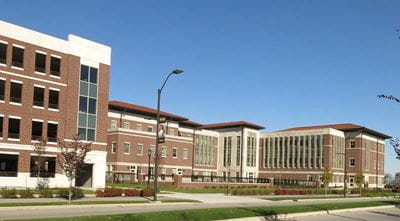
West Lafayette
Lyles-Porter Hall, opened in 2014, is a shared health sciences facility on the campus of Purdue University. A partnership between the School of Medicine and Purdue Engineering is producing next-generation physicians and scientists.

Evansville
The Stone Family Center for Health Sciences opened in 2018 in downtown Evansville, sparking economic development in what is becoming a health care hub. The Stone Center is a public-private partnership strongly supported by Mary O’Daniel Stone and Bill Stone, who recently donated $34.2 million for a new center for child and adolescent psychiatry.
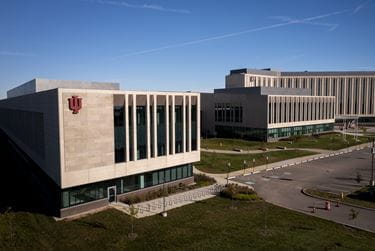
Bloomington
The Regional Academic Health Center opened in late 2020, along with the new IU Health Bloomington Hospital. The center also houses other health sciences programs at IU including nursing, social work, speech and hearing, and dentistry.

Indianapolis
The architectural design has been approved for the new Medical Education Center and Academic Health Center on the IUPUI campus. A research tower will provide vital room for research expansion and foster collaboration among scientists and physicians. The main building will feature spaces for 12 learning communities—making the largest medical school in the country feel smaller and more supportive. There will be gathering spaces throughout the building and green spaces outside, including walking paths.
RESEARCH
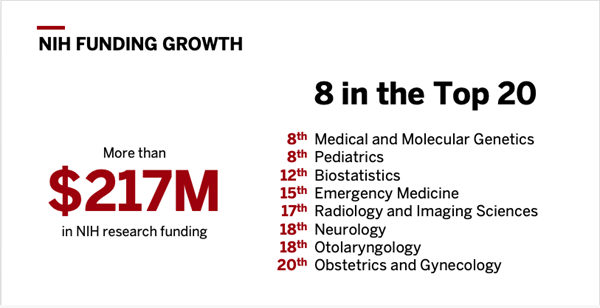
For the sixth year in a row, IU School of Medicine received record-breaking funding from the National Institutes of Health (NIH). The school’s scientists and physicians were awarded more than $217 million. Four out of the five largest NIH grants were for Alzheimer’s research.
IU School of Medicine has NIH-funded research in labs throughout the state. Community health partnerships through the Indiana Clinical and Translational Sciences Institute (CTSI) are making clinical trials available to patients statewide.
Total funding, including non-government funding rose to nearly $450 million in 2021.
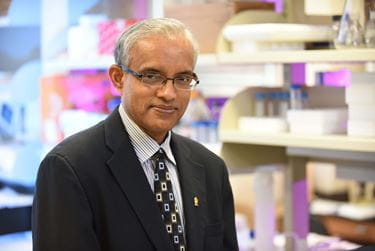
Health Disparities
- Harikrishna Nakshatri, PhD, received a Department of Defense grant to study biologic factors in health disparities affecting outcomes for Black women with aggressive breast cancer.
- Benjamin Gaston, MD, and colleagues recently published an important paper finding what was thought to be a very rare genetic condition causing chronic lung disease is not so rare after all. They further found the condition disproportionately affects patients of African descent.
IU physicians and scientists are working to better treat and cure many diseases including cancer, heart disease, lung disease and more.
- In diabetes, Michael Weiss, PhD, has developed a potentially revolutionary “hinge” device that could be the key to “smart” insulin therapy of the future.
- In pediatrics, D. Wade Clapp, MD, is leading the $11.4 million National Cancer Institute (SPORE) grant focusing on treating a type of childhood cancer stemming from genetic mutation that causes tumor growth.
 The Precision Health Initiative (PHI) catalyzed this work as a five-year, $120 million initiative that continues today. PHI funds contributed to several advancements:
The Precision Health Initiative (PHI) catalyzed this work as a five-year, $120 million initiative that continues today. PHI funds contributed to several advancements:
- Pediatric Precision Genomics Clinic researchers now test the DNA of every child at IU Health with aggressive or relapsed sarcomas. This has led to the identification of a potentially useful FDA-approved treatment in greater than 90 percent of cases.
- The Undiagnosed Rare Disease Clinic opened in 2020, using advanced genomics to solve medical mysteries.
- Key leadership recruitments were made including Huda Salman, MD, PhD, to lead the Brown Center for Immunotherapy.
- A Good Manufacturing Practice (GMP) Facility for cellular and gene therapy allows IU scientists to research and develop new cell, gene and immunotherapy-based trials regulated by the U.S. Food and Drug Administration.
Team science is how the School of Medicine will advance. The Indiana Center for Regenerative Medicine and Engineering is a multidisciplinary, multi-institutional research center capitalizing on expertise and resources throughout the state. Similarly, the Indiana Biosciences Research Institute, established in 2018, is a public-private collaborative designing solutions for health problems associated with metabolic disease including diabetes and cardiovascular disease.
FINANCE
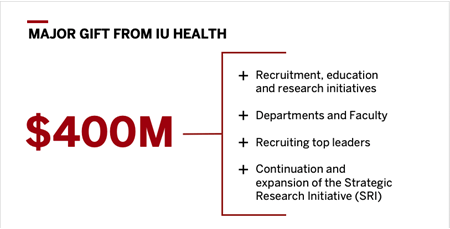 IU School of Medicine is in strong financial shape and managing investments wisely. The school recently received a $400 million gift from IU Health. The majority of funds will be invested in departments and faculty. This gift will support:
IU School of Medicine is in strong financial shape and managing investments wisely. The school recently received a $400 million gift from IU Health. The majority of funds will be invested in departments and faculty. This gift will support:
- Education and research initiatives
- Recruitment of top leaders and diverse faculty
- Continuation and expansion of the Strategic Research Initiative (SRI)
IU Health and IU School of Medicine are also forming a Unified Medical Group. This will expand clinical placements for students and residents, give employees greater flexibility, and provide statewide access for patients to participate in clinical trials.
PEOPLE
Good people are behind all of the school’s successes–in education, research, school management and patient care. Especially during the COVID-19 pandemic, the school community has shined.
- Family Medicine residents stepped up to answer the call when COVID numbers began to surge last winter with the highly contagious Omicron variant–40 percent were redeployed to COVID units at IU Health Methodist Hospital.
- Data scientists at the Regenstrief Institute have worked tirelessly to keep the COVID-19 Dashboard for the State of Indiana up-to-date.
Growth of faculty and staff Everyone at IU School of Medicine is working hard to make sure the school functions well.
- Full-time faculty has grown by 387 over the last four years
- Volunteer faculty has grown by 544
- Staff has grown by 175
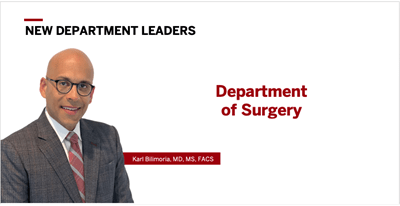
New Department Leaders
- Kun Huang, PhD, MS, Biostatistics and Health Data Science
- David Aronoff, MD, Department of Medicine
- Karl Bilimoria, MD, MS, FACS, Department of Surgery (appointment effective August 1, 2022)
DIVERSITY, EQUITY AND INCLUSION
IU School of Medicine celebrates the diversity of all community members. Many faculty, staff and students have given countless hours of energy and thought to ways IU School of Medicine can more fully enact its values and be a truly inclusive and welcoming place to work, learn and serve.
 The medical school has seen progress in the number of faculty, staff and learners coming from backgrounds underrepresented in medicine—but there is still work to be done.
The medical school has seen progress in the number of faculty, staff and learners coming from backgrounds underrepresented in medicine—but there is still work to be done.
This spring, IU School of Medicine will conduct a national search for an Executive Associate Dean for Diversity, Equity and Inclusion. This is a new leadership position that will serve as the school’s chief diversity officer. All members of the school community are invited to participate in upcoming forums on April 27, April 29 and May 2.
Those who are unable to attend or feel uncomfortable sharing in public settings may complete an anonymous online survey. They may also share thoughts or questions at any time during the search process by reaching out to the Executive Recruiting Team.
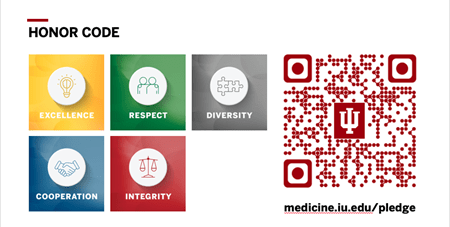 Honor Code
Honor Code
The Honor Code outlines the school’s core values—Excellence, Respect, Integrity, Diversity & Inclusion, and Cooperation. Please scan the QR code to review the IU School of Medicine Honor Code and sign the Honor Code Pledge.
MENTAL HEALTH SERVICES
Providing a supportive environment for every member of the community is important. The Department of Mental Health Services has intentionally designed services to minimize barriers to seeking care:
- No fees
- No session limits
- Increased accessibility by expanding the MHS team and adding evening hours
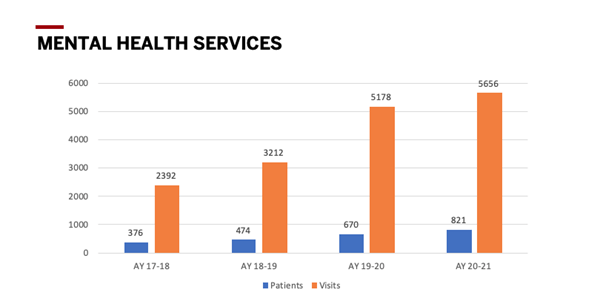
Significant efforts have been made to decrease the stigma of seeking mental health services. Over the last four years, IU School of Medicine has seen the number of visits and patients more than double. During the pandemic, all services shifted to telehealth—making access easier. Patient satisfaction surveys show 97 percent of patients are satisfied with telehealth treatment.
IU Resources
Healthy IU
SupportLinc Employee Assistance Program
1-888-881-LINC (5462)
IUSM Mental Health Services Learner Portal
medicine.iu.edu/mental-health-services
317-278-2383
National Resources
Suicide Prevention Lifeline
1-800-273-8255
Suicide Prevention Crisis Text Line
Text HOME to 741741
Physician Support Line
1-888-409-0141
